
Young people love kittens nowadays, because they are so cute!
Not only does it look cute enough, but the meow sounds are also very healing, and the lazy look seems cute no matter what it does.
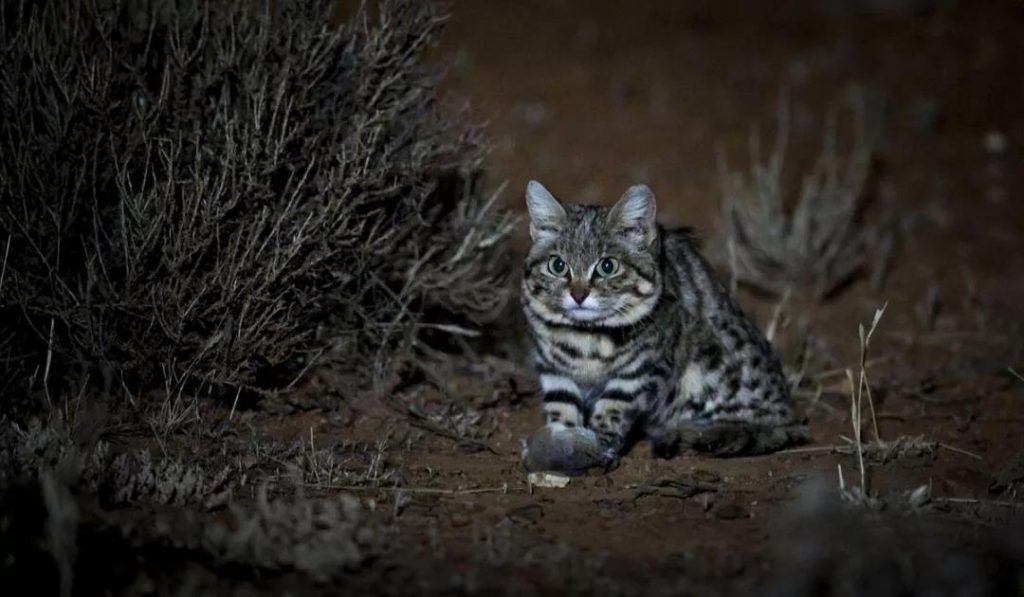
Even the stray cats in the community always walk around the garden gracefully, occasionally someone will give them some cat food, but once they want to get close to them, they will be avoided.
Humans conquer the world, and cats conquer humans, this is true.
But if you see such a kitten in the wild, you have to be careful.
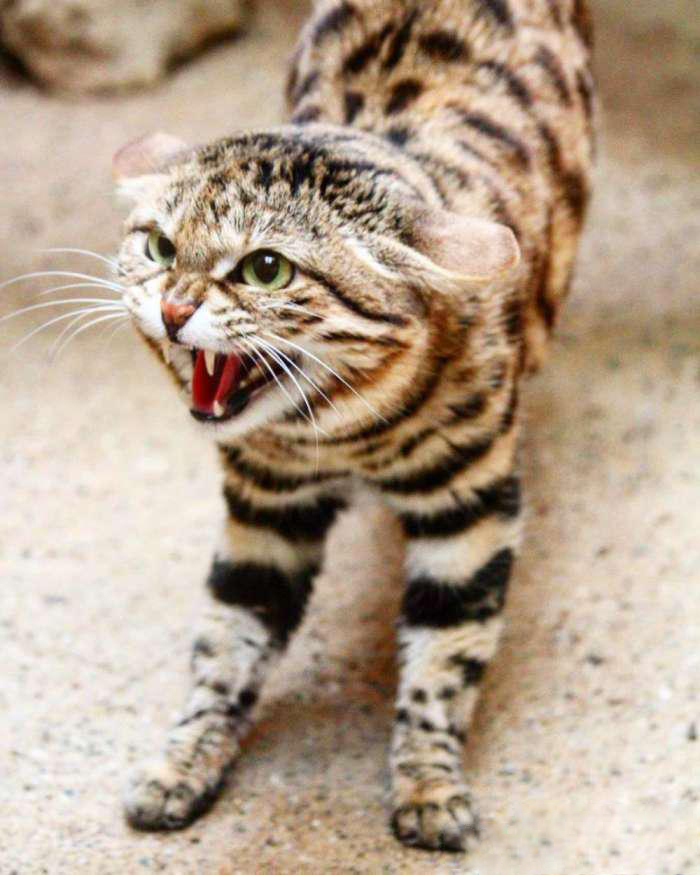
Black-footed cat.
It’s not a stray kitten but a real wild cat.
They are called black footed cats because the pads on their feet are black and have long hair, which is very suitable for them to live in the arid desert.
The sand that has become extraordinarily hot after exposure to the sun will not burn their feet, and they can also make a relatively quiet sound when capturing prey.
As one of the smallest species of wild cats, black-footed cats seem to be less tall than other wild cats such as tigers, lions, and jaguars.
But just such a small animal with an average weight of 1.6 kg has lethal lethality.
Under their lovely appearance, there is a killing soul.
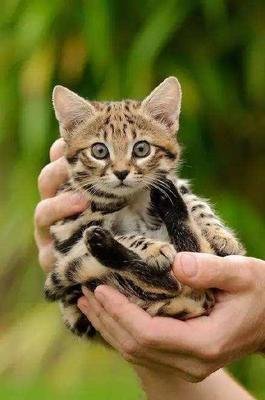
The black-footed cat is a nocturnal animal, because of its small size, it provides cover for their hunting at night.
But the reason black-footed cats really like night walking is because they are afraid of getting sunburned.
They are mainly distributed on the hot African continent. During the day when the sun is big, black-footed cats will hide in termite hills or abandoned caves of other animals in order to avoid the heat.
At night, it is their home court.
Black-footed cats are very patient, they can shuttle back and forth between the grass, very careful not to touch any grass, so as not to be found by alert prey.
In the process of looking for prey, they move their heads left and right, observe and listen carefully, and be alert to any movement or sound, and finally locate the specific direction of the prey.
Or, they hide themselves in some rodent dens and wait patiently with their front paws. Sometimes the waiting time can be as long as an hour.
Whether or not the eyes are open, the black-footed cat will use its ears to listen to nearby sounds.
It’s like it comes with the listening skills of a supervisor in a game.
The black-footed cat has a very fast movement speed and good eyesight. When it launches an attack, it will pounce on its prey from behind the cover and be caught off guard.

Because there is less food in the desert, black-footed cats tend to travel long distances in search of prey.
Their moving range is between 4.5 kilometers and 16 kilometers, with an average moving range of about 8.5 kilometers per night. They can hunt almost all night and only need a short rest time.
The lion we usually know has a success rate of about 25%. It is still a group hunting of two or three lions. If it is a single lion hunting, the success rate will be lower.
Black-footed cats that are accustomed to walking independently have a hunting success rate of up to 60%, which means that they can capture one prey every 50 minutes. On average, there are 10 to 14 pitiful little cats a night, and they become the dish for black-footed cats.
So they are the deadliest animals, nothing wrong.
The favorite prey of black-footed cats is gerbils. Of course, in addition to some very small mammals and birds, black-footed cats sometimes eat insects or bird eggs.
When eating bird eggs, they will gently crush the bird eggs with their jaws, and then lick the contents of the egg shells clean.
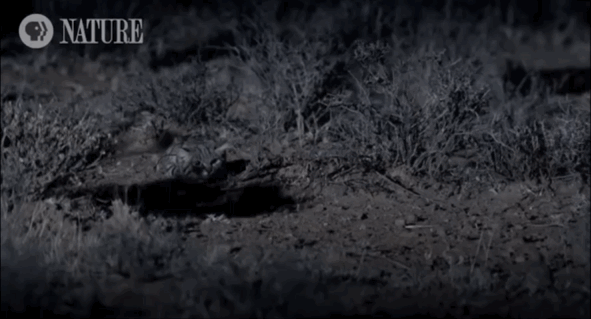
Black-footed cats are solitary animals. They will mark their territory with urine or feces. The territory of adult male black-footed cats will overlap with the territory of 1-4 female black-footed cats.
However, although the territories overlap, they only come together when they mate.
In August and September each year, it is the breeding season for black-footed cats.
After 63-68 days of pregnancy, female black-footed cats will give birth to 1-4 kittens at the bottom of the cave, and they can breed twice a year.
Newborn kittens will move within their mother’s territory. In order to avoid the danger of being targeted by predators, mothers often take the kittens to move their dens.
Because of the harsh living environment, black-footed kittens often learn to hunt at a very young age. Kittens of 3 to 5 months old can live without their mothers.
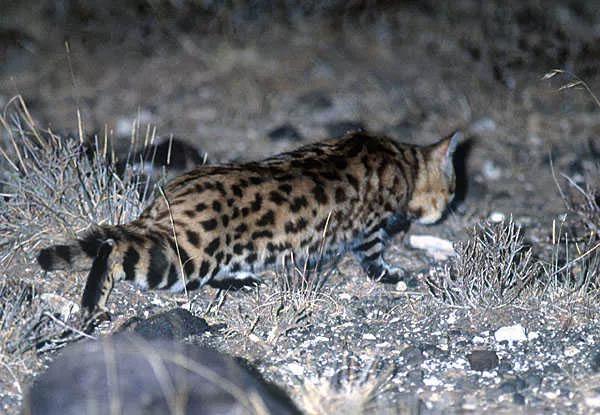
However, black-footed cats have been listed as a vulnerable species by the IUCN Red List. They are already scarce and often face some human threats.
The most important thing is that their habitats continue to shrink. The degradation of their habitats will reduce the prey they need to survive, and the caves and territories they live in will also be reduced accordingly.
Moreover, although black-footed cats are fierce, they tend to become prey of leopards, snakes or large owls because they are too small. These animals are their natural enemies and one of the reasons that affect their numbers.
Black-footed cats are very demanding on the environment and must be kept dry in order to survive, so it is difficult for these “desert residents” to be kept in captivity outside their original place of origin.
Black-footed cats that are successfully raised in captivity will weaken their pedigree because of their crossbreeding with domestic cats.
So the reasons are combined, which has led to the continuous decrease in the number of black-footed cats.
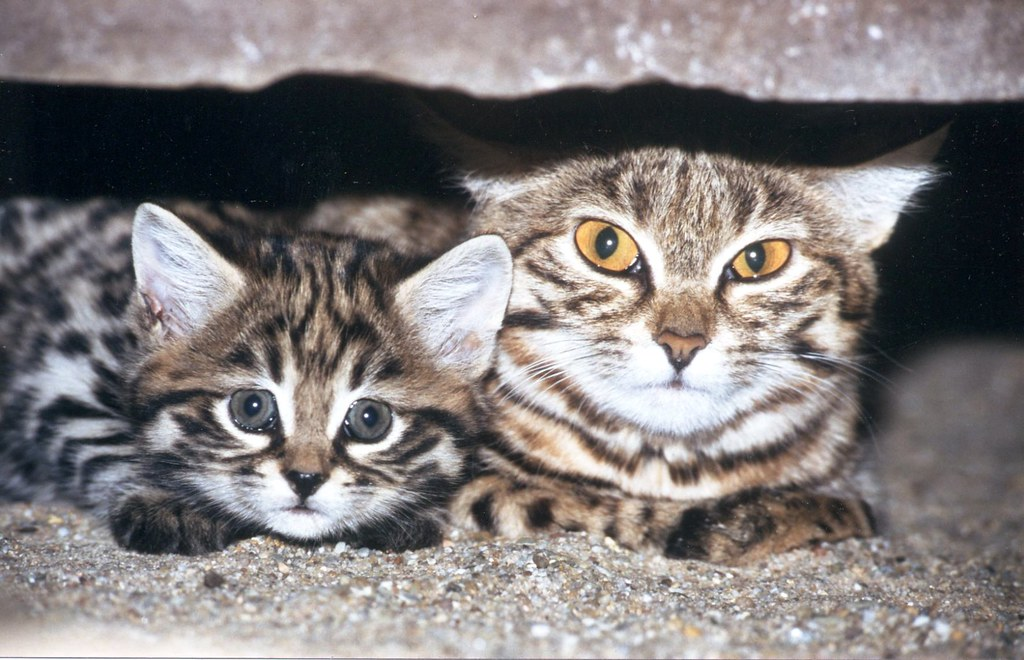
So the reasons are combined, which has led to the continuous decrease in the number of black-footed cats.
As the deadliest cat in the world, it is probably the cutest killing machine.
So in the end, let’s take a look at this kitten. Is there a cold-blood killer?

Comments